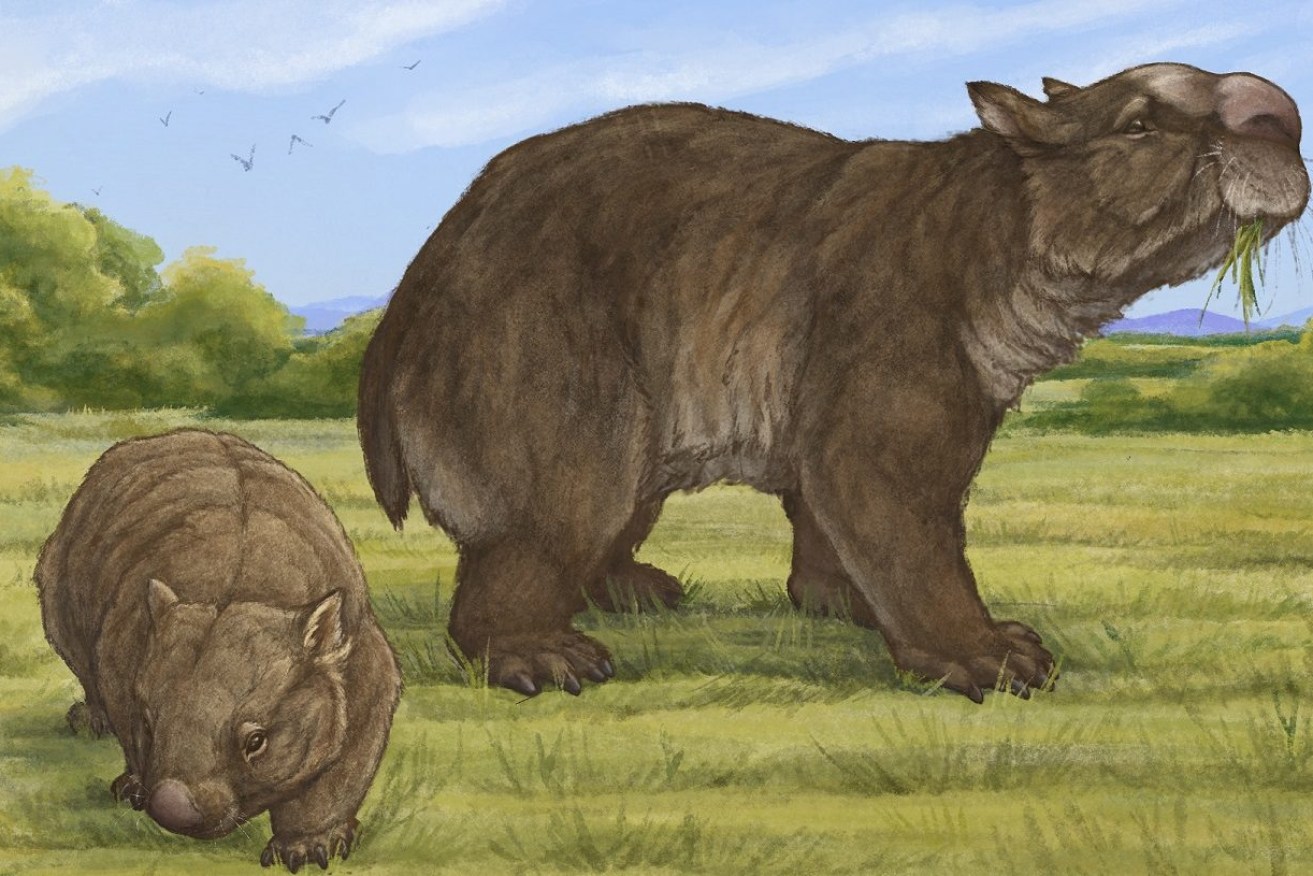Rocky stakes claim in world of giant wombats – this is the next big thing
In the celebrated world of science’s mega-creatures, the spotlight might finally be on the real giant wombat of Rockhampton.


A reconstruction of how the newly-discovered giant wombat would have looked. (Image: Griffith University)
While ancient ‘giant wombat’ Diprotodon may be the big name in wombats for being the largest ever at the size of a small car, scientists have uncovered an un-heralded but true large species of wombat that once roamed Queensland called Ramsayia.
Not only should Rocky’s Ramsayia take its place as the poster creature of extinct wombat megafauna, the new research shows, but the Diprotodon is barely even part of the wombat family.
Researchers led by Associate Professor Julien Louys from Griffith University’s Australian Research Centre for Human Evolution, said analysis of the fossilised skull of Ramsayia had shed light on the large species that was a forerunner of the modern-day wombat family.
The team’s analysis of the complete skull of the true fossil giant wombat found in a Rockhampton cave and estimated to be around 80,000 years old, is published today in the scientific journal Papers in Palaeontology.
Louys said the discovery provided unprecedented insights into the biology and appearance of the previously little known ‘gentle giants’.
“The extinct megafauna of Australia never ceases to amaze and intrigue not just Australians, but people all over the world,” he said.
“Although one of the most charismatic of the giant mammals to go extinct, Diprotodon is commonly referred to as a ‘giant wombat’. But this is incorrect as
Diprotodon belongs to an entirely different family – equivalent to saying a hippo is just a giant pig.
“There were, however, true giant wombats. These have traditionally been poorly known, but the discovery of the most complete skull of one of these giants, Ramsayia, has provided us with an opportunity to reconstruct what this creature looked like, where and when it lived, and how the evolution of giant wombats took place in Australia.”
Louys said extinct giant wombats like Ramsayia of the family Vombatidae, which were broadly defined as mega-creatures twice the size of modern wombats, were rarer than the fossil Diprotodontids.
Ramsayia also had extensive cranial sinuses, which had not been previously reported for a wombat, he said.
“This indicates that the wombat had a large, rounded skull for the attachment of specific and strong chewing muscles,” he said.
“The giant wombat also possessed a ‘premaxillary spine’, an indication that it had a large, fleshy nose.
“In this paper, we show that all true giant wombats evolved large body sizes first, then individually became quite specialised to eat different types of grasses.
“We also dated this species as being about 80,000 years old. This is the first date for this species and is much earlier than human arrival in Australia, although we still don’t know exactly when or why this species became extinct.”












